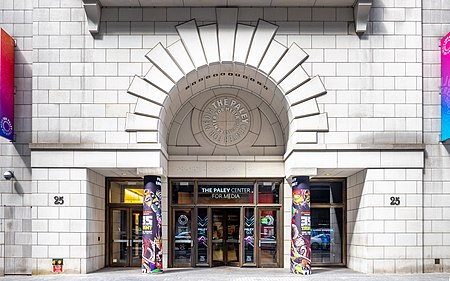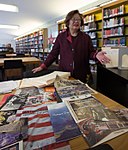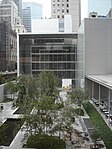Paley Center for Media

The Paley Center for Media, formerly the Museum of Television & Radio (MT&R) and the Museum of Broadcasting, founded in 1975 by William S. Paley, is an American cultural institution in New York with a branch office in Los Angeles, dedicated to the discussion of the cultural, creative, and social significance of television, radio, and emerging platforms for the professional community and media-interested public. It was renamed The Paley Center for Media on June 5, 2007, to encompass emerging broadcasting technologies such as the Internet, mobile video, and podcasting, as well as to expand its role as a neutral setting where media professionals can engage in discussion and debate about the evolving media landscape.
Excerpt from the Wikipedia article Paley Center for Media (License: CC BY-SA 3.0, Authors, Images).Paley Center for Media
West 52nd Street, New York Manhattan
Geographical coordinates (GPS) Address Website External links Nearby Places Show on map
Geographical coordinates (GPS)
| Latitude | Longitude |
|---|---|
| N 40.760555555556 ° | E -73.9775 ° |
Address
Paley Center for Media
West 52nd Street 25
10019 New York, Manhattan
New York, United States
Open on Google Maps







